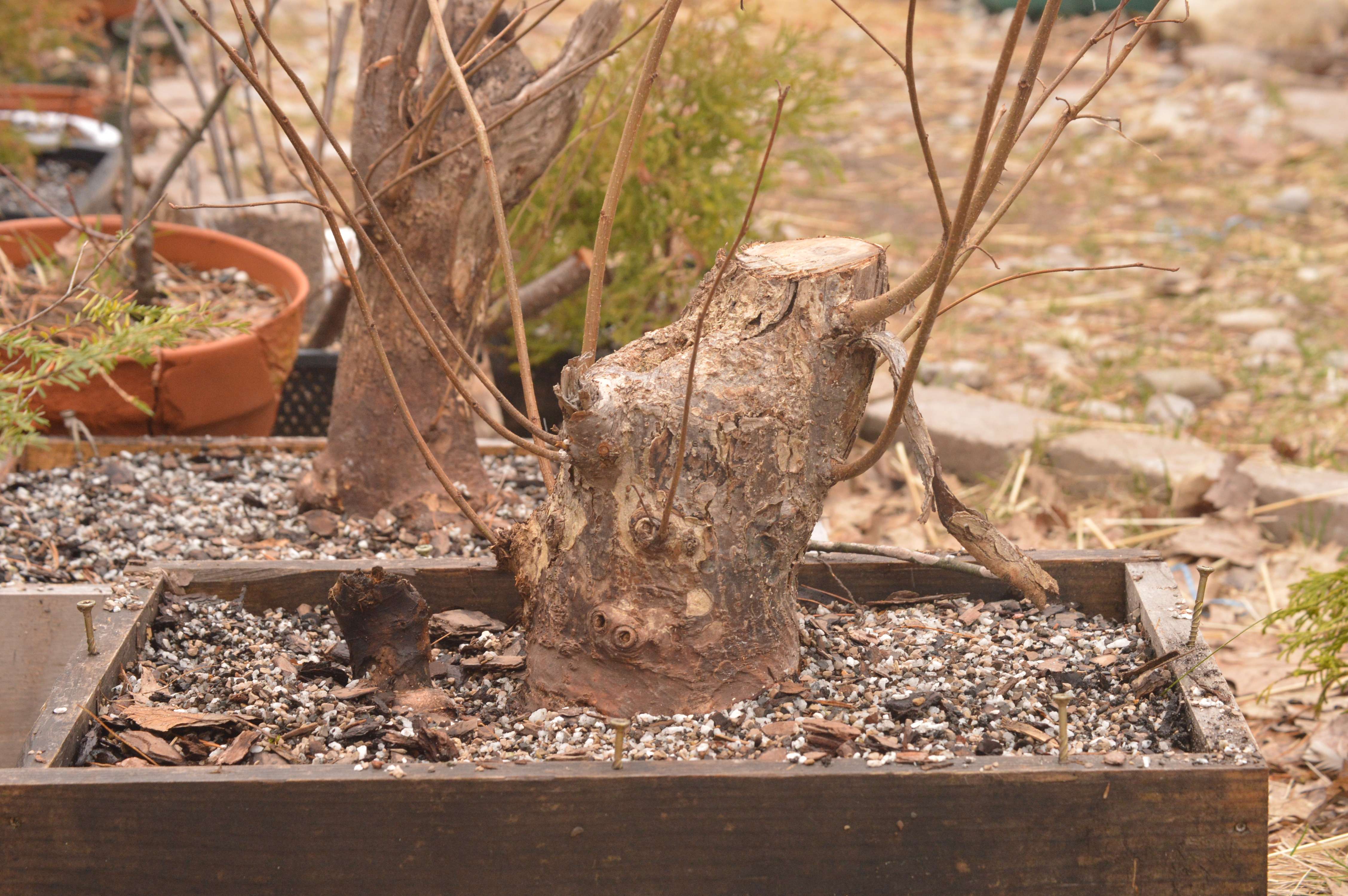CasAH
Chumono
What species is it?
Ostrya virginiana - hop flowered hornbeam?
Hops - Humulus?
something else?
Ostrya virginiana is the only one native to the area. Not uncommon along the lower Des Plaines River.
What species is it?
Ostrya virginiana - hop flowered hornbeam?
Hops - Humulus?
something else?
The old bark looks rougher than most Ostrya I've seen, but it could be Ostrya, the younger bark fits. Leaves I can't see the details, but leaves are plausible.
A great find @sorce , that is one heck of a stump.
Great species for bonsai, in my book, as good as Carpinus, with a difference. Ostrya tolerate dry just a touch better. They are not cactus, but Carpinus are damaged easily by a short drought, Ostrya seem to bounce back a bit quicker with less damage. Important if you don't have an automatic watering system and leave town for a weekend. I like the hop shaped seed clusters.
I have a batch of seedlings, finishing 3rd year. Seed requires a warm stratification followed by cold stratification, so I planted seed spring of 2014, it finally sprouted spring 2015. Got to use tags and labels or you loose track of the seedlings. Some are now 3 feet tall, look rather elm like, with a few differences.
When do you collect them? Most of mine were in the spring as the buds were breaking. I couldn't get many feeder roots, mostly big roots. They extended out, stopped budding a few weeks later and slowly went brown and died. Branches took a long time to go brown though...most of the summer. Happened to all 3 i collected this year... it's a shame, one might have been well over 50 years old. The one i had success is about that size, any bigger and no luck for me. Pulled the big one out and no new root formed.Not to high Jack but @Timbo I’ve hadn’t the opposite experience. I love these things here are a couple of mine from last year. They bud from old stumps, even better from young stumps in my experience.View attachment 167574View attachment 167577 View attachment 167578View attachment 167580


You're just going to have come over in spring. We will go collect whatever you want. Except Chinese elms.I can't get them to bud out after collecting...i'm 1 for 7...i had a 6in+ that budded out and then died. From what i've read, the older they get the harder they are to dig out alive.
It's a shame cause they are all over here as well as Carpinus. I've never lost a Hornbeam though.
Hop-Hornbeams almost always have a good flare base up here.
They don't call it ironwood for nothing...My reciprocating saw burns through them.
I have no experience with the species, but typically if you can't get any close fine roots, you may not expect great survival rates. Fine roots are what you need most to ensure survial. A few suggestions I have are,When do you collect them? Most of mine were in the spring as the buds were breaking. I couldn't get many feeder roots, mostly big roots. They extended out, stopped budding a few weeks later and slowly went brown and died. Branches took a long time to go brown though...most of the summer. Happened to all 3 i collected this year... it's a shame, one might have been well over 50 years old. The one i had success is about that size, any bigger and no luck for me. Pulled the big one out and no new root formed.
I didn't cut the top other than to smooth out the splintered mess the county left behind.
I collected them in the forest maybe it was just to much light...only thing i can think of...my other one does fine in full sun though.
My only survivor looks a tad bit diff:
I have some new theories on hornbeam dieback as well. still theories at this point but after next season I should have some more conclusive evidence to report.
Not sure i can see the ground in late Feb let alone dig in it.both of my stumps that I showed were completely bare rooted in late feb or early march. I have others that have responded well to the procedure. 1/8-1/4"pumice, repti bark, turface MVP, lava, and charcoal was the mix. I'm super geeked for repottong season this year. not to mention collecting. Mike, I'm going to make it a point to get up therefor spring collecting this year . gonna bring the minivan and fill er up, as I too have several trees marked.
I have some new theories on hornbeam dieback as well. still theories at this point but after next season I should have some more conclusive evidence to report.
